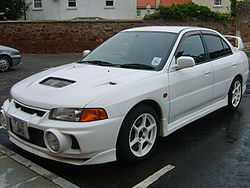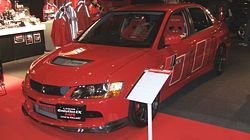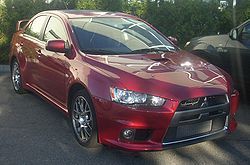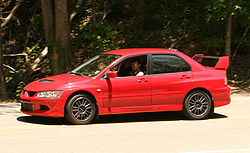
August 1995 saw the arrival of the Evolution 3, which had several improvements over the Назад models. New, еще aggressive styling and a new nose moulding improved the air supply to the radiator, intercooler and brakes. New side skirts and rear bumper moldings and a larger rear spoiler were added to reduce lift. Improved engine had higher compression ratio than before (8.5:1 to 9.0:1) and new turbocharger compressor (60 mm to 68 mm[3]), which gave power output of 270 bhp (201 kW) at 6250 rpm, 309 N·m (228 lb·ft) at 3000 rpm.
Production August 1995–August 1996
Platform CE9A
Transmission(s) 5-speed manual
Wheelbase 2,510 mm (98.8 in)
Length 4,310 mm (169.7 in)
Width 1,695 mm (66.7 in)
Height 1,420 mm (55.9 in)
Curb weight 1,190–1,260 kg (2,624–2,778 lb)

The Evolution I was upgraded in December 1993, and was produced until 1995. It consisted mainly of handling improvements, including minor wheelbase adjustments, larger swaybars, bodywork tweaks including a larger spoiler, and tyres that were 10 mm (0.4 in) wider. This Evolution also has a 50 L (13.2 US gal; 11.0 imp gal) fuel tank. Power output was increased to 256 PS (188 kW; 252 hp) from the same engine and torque was unchanged for both GSR and RS models.
Production January 1994–August 1995
Platform CE9A
Transmission(s) 5-speed manual
Wheelbase 2,510 mm (98.8 in)
Length 4,310 mm (169.7 in)
Width 1,695 mm (66.7 in)
Height 1,420 mm (55.9 in)
Curb weight 1,180–1,250 kg (2,601–2,756 lb)












